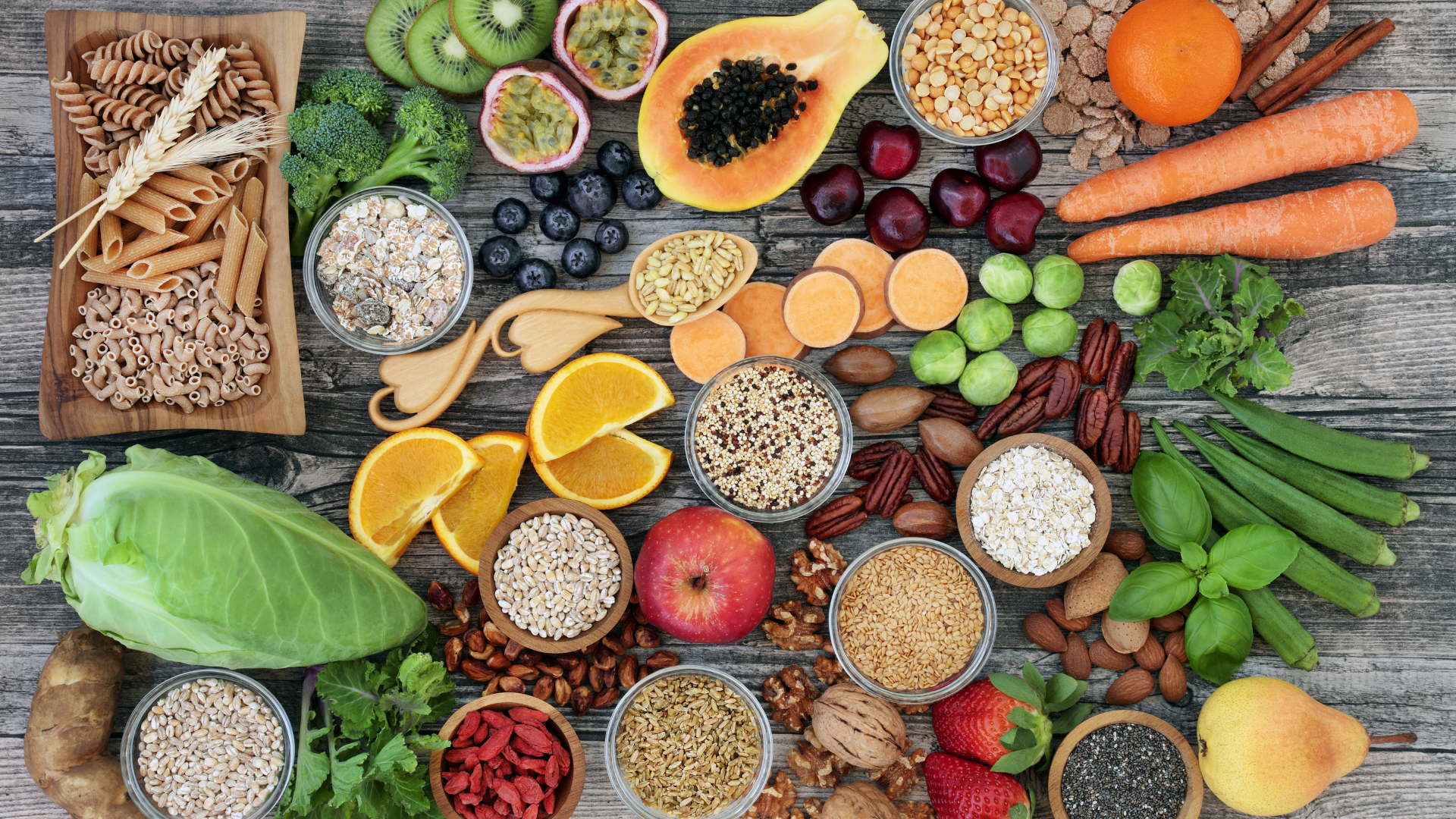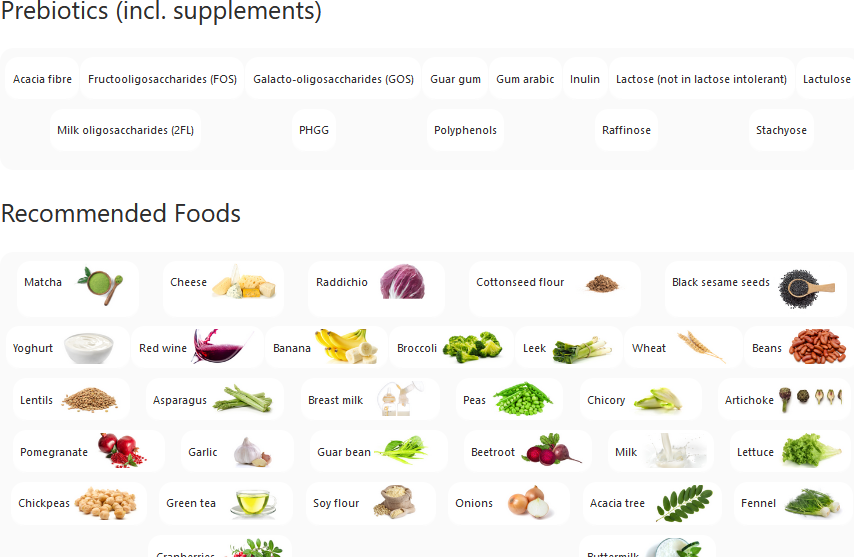
Fibre: What is it and why do we need it?
What is fibre?
Fibres are carbohydrates found in plant-derived foods that cannot be completely broken down by human digestive enzymes but are broken down by the bacteria present in the gut microbiota.
Fibre comes in two main types: soluble, which dissolves in water, and insoluble, which does not dissolve in water.
What do these fibre types do?
Soluble fibre slows digestion since it blends with water in the gut, forming a gel-like substance. This means that the body will take longer to break down fat from food in the diet that would have otherwise been digested, helping weight management. Furthermore, soluble fibres bind with fatty acids to help flush them out of the body, lowering LDL cholesterol. Because of this, regularly eating soluble fibre may reduce the risk of cardiovascular disease and circulatory conditions.
Insoluble fibre helps hydrate and move waste through the intestinal tract. It does not blend with water and passes through the digestive system mostly intact. Primarily it functions as a bulking agent, helping speed the passage of food and waste through the intestinal tract. This means the consumption of insoluble fibre will prevent constipation and other complications associated with it, such as haemorrhoids.
Both fibre types leave people feeling fuller for longer, soluble fibre doing this by slowing digestion, and insoluble fibre filling up space in the intestinal tract. This feeling of fullness is a large reason why fibre has been linked to reduced weight gain and reducing weight-associated diseases such as obesity and diabetes.
It is important to note that eating certain fibres can also affect the microbiome. These fibres are called prebiotics, which can increase friendly gut bacteria and decrease the number of detrimental gut bacteria. An example of this is 'Fructooligosaccharide (FOS)', which has been found to be bifidogenic, meaning that this prebiotic helps feed bacteria from the Bifidobacterium genus. This is beneficial since bacteria from the Bifidobacterium genus have been found to repress procarcinogenic enzymatic activities within the microbiota, amongst many other effects which can be found in the description for the Bifidobacterium genus in the 'probiotics' section at Biomesight. To help you receive these benefits yourself, we also have recommendations to help you reach the optimum amount of a certain bacteria, whether this is increasing or decreasing. An example below is our recommendations for increasing the amount of bifidobacteria in your microbiome, recommending bifidogenic prebiotics such as onions, which contain FOS. These recommendations are also found in the 'probiotics' section at Biomesight.
How much fibre should you have?
As these health benefits are extremely useful, government guidelines were set up in 2015 by the Scientific Committee on Nutrition, advising eating a certain amount of fibre daily, depending on age:
- Ages 16 and over should intake 30g of fibre a day
- Ages 11-15 should intake 20g of fibre a day
- Ages 2-5 should intake 15g of fibre a day
While the Scientific Committee on Nutrition recommends that the source of fibre be from starchy carbohydrates and whole grains, fibre can be derived from multiple different sources.
Using Food Data Central, here are some common examples of high fibre foods per 100g (unfortunately, very few foods have the amounts of soluble and insoluble fibre specified, where they instead display the total amount of dietary fibre found):
- Microwave popcorn - 13.6g
- Sun-dried tomatoes - 12.3g
- Dark chocolate (70-85% cocoa) - 10.9g
- Toasted whole wheat bread - 7.5g
- Nuts
- Almonds - 12.5g
- Pistachio nuts - 10.6g
- Hazelnuts - 9.7g
- Pecans - 9.6g
- Macadamia nuts - 8.6g
- Peanuts - 8.5g
- Vegetables
- Rose hips - 24.1g
- Cooked broccoli - 3.3g
- Raw carrot - 2.8g
- Legumes
- Boiled red kidney beans - 9.3g
- Black beans - 8.7g
- Chickpeas - 7.6g
- Fruits
- Passion fruit - 10.4g
- Avocados (yes, this is a fruit!) - 6.7g
- Raspberries - 6.5g
- Williams pear - 3.1g
- Blueberries - 2.4g
- Gala apple - 2.1g
- Apricots - 2g
As you can see, there is a wide variety of food sources from which you can derive your daily recommended amount of fibre, meaning that no matter your diet, you can easily achieve your 30g of fibre. For example, avocados would be perfect for a keto diet since they contain low amounts of carbohydrates and have high amounts of fibre and healthy fats.
Incorporating fibre into your daily diet is easily done and can be achieved by eating alternatives or integrating small food items into your current diet during each meal. One such example is choosing to eat brown rice instead of white rice for dinners since they contain a relatively similar amount of calories (112 calories in 100g of brown rice vs 97 calories in 100g of white rice), but brown rice contains 1.8g of fibre per 100g compared to 1g of fibre in white rice per 100g. Another example would be trading shortbread biscuits for carrots for a snack, the former containing 451 calories and 1.3g of fibre per 100g, compared to carrots which contain 173 calories and 2.8g of fibre per 100g. Alternatively, fibre supplements can be purchased from pharmacies.
What does eating too much fibre do?
However, fibre is not without its downsides. Having a rapid increase in fibre uptake can cause the body to react adversely, causing flatulence, bloating, constipation, diarrhoea, and abdominal cramping. To avoid this, it is recommended that people have a slow introduction of fibre into their diet, gradually increasing the amount of fibre eaten per day until reaching the amount specified by the Scientific Committee on Nutrition. This caution should be especially heeded for those wanting to take fibre supplements as it is easy to take too much fibre through this method.
In conclusion, fibre is something that everyone should try incorporating into their diets where possible due to its great many health benefits. This can be easily done but should be done slowly since a sudden rapid increase in fibre uptake may have adverse effects.
Categories: Prebiotics Tags: featured health weight-loss wellness

